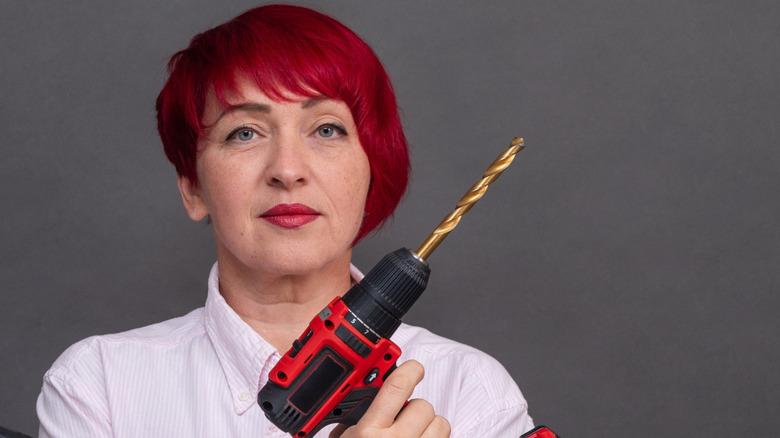The Lawn Aeration Trick That'll Revive Your Patchy Yard Without Pricey Equipment
The goal of nearly every homeowner with a lawn is for their grass to be thick, healthy, and green. When brown patches occur there may be a few different reasons for the problem, but one of the most common is soil compaction. Compaction, soil too tightly packed together, keeps moisture and oxygen from the soil, starving microorganisms and the grass roots from the nutrients they require for healthy soil. Compaction can occur in high-traffic areas and sections of the lawn with poor water drainage. Poor drainage is exacerbated by extreme rain events. Use this tool to calculate your soil compaction, then get ready to fix your issue. The solution to this problem is aeration, holes bored into the soil.
Aeration provides a pathway for air and moisture to easily penetrate the top 4 to 6 inches of the soil. Healthy soil is a complex mix of many components, bacteria, fungi, protozoa, and nematodes, to name a few, all of which require oxygen and moisture. Aeration is a great way to support all those components while fighting soil compaction. There are machines to properly aerate soil which are expensive to rent and more so to own, but fear not, how and when to aerate your lawn is not beyond you (we have a trick!). But, first, more about effective aeration.
Our money-saving trick
To effectively solve the soil compaction problem, aeration machines remove cylindrical sections (called cores) of the soil at least ¾ inch in diameter and 3 to 4 inches deep. The voids left behind allows sufficient air and water access to address the problem. In the section of the lawn you are addressing there needs to be between 20 to 40 holes per square foot to be effective. There are "aeration devices" that have nail-like projections, only an inch or two long, which pierce the soil but don't remove any material. This just won't solve the problem.
Using our trick, you can achieve proper aeration by using a cordless drill outfitted with a ¾-inch diameter drill bit. Activate the drill and plunge the bit into the patchy soil. Raise and plunge it several times to effectively remove the soil you are loosening. Do this 20 to 40 times per square foot in the patchy affected area. When you've completed the task apply dirt as a top dressing and spread grass seed right away to revitalize the lawn, Obviously, this is not a practical solution for very large areas of soil compaction, but for patchy areas in your lawn it will work extremely well (and save you some money).

